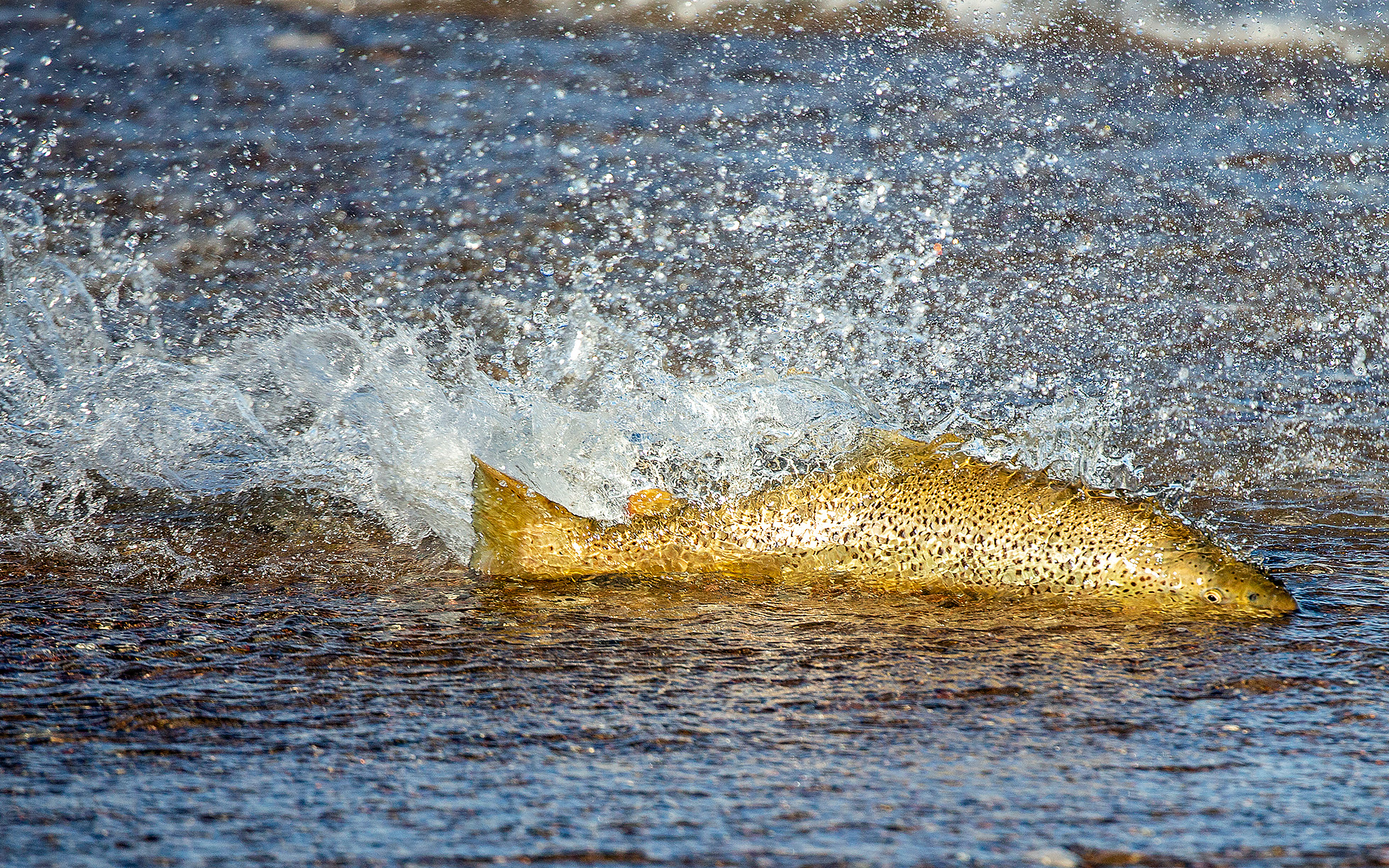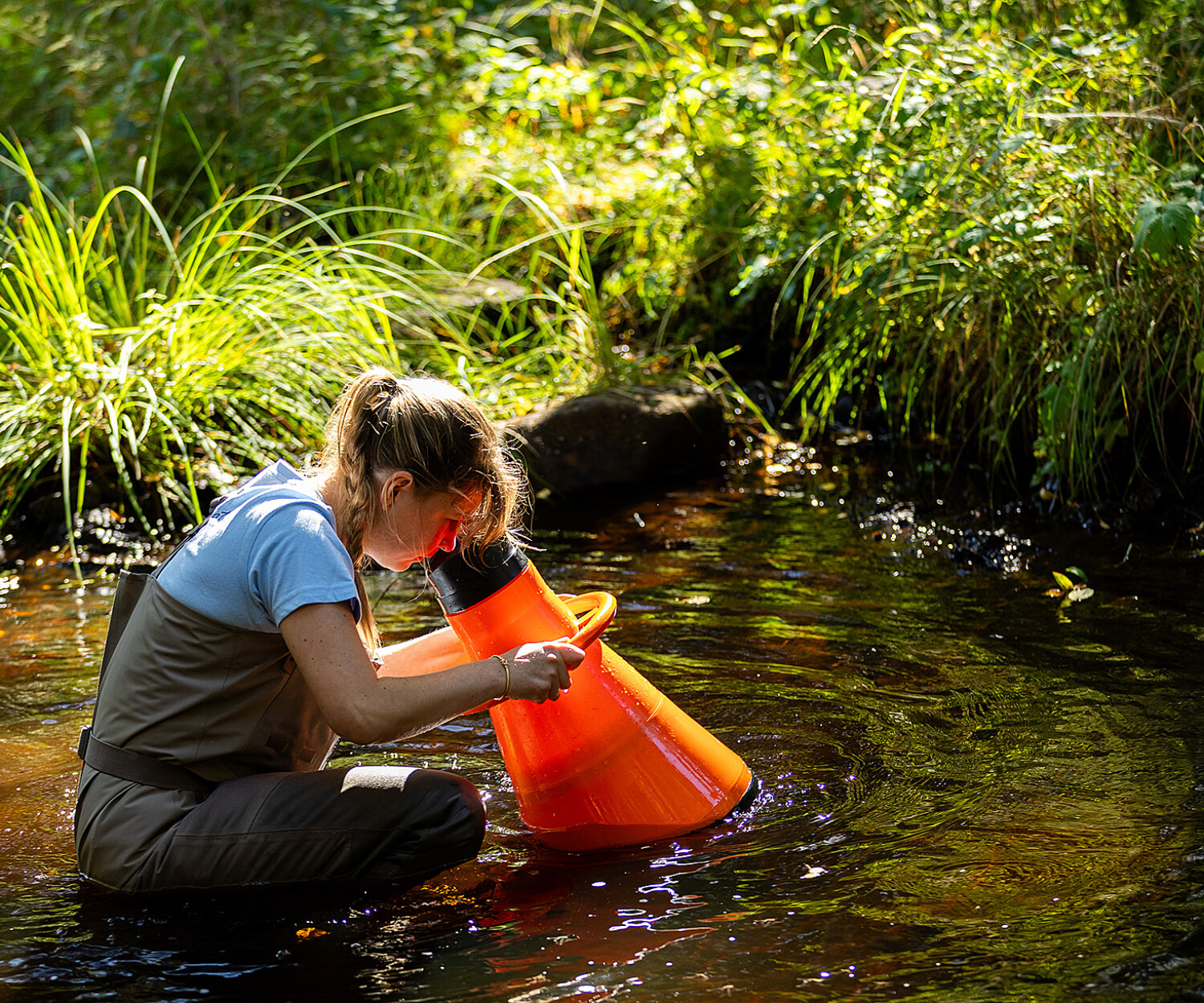River Emån
Classic water being restored
River Emån, known for its population of large-sized sea trout, but also home to around 30 other fish species such as salmon and the endangered European catfish. The threatened freshwater pearl mussel and thick-shelled river mussel are also found here.
A number of migration barriers, habitat loss and the effects of acidification and eutrophication have affected River Emån and the animals that live there. Past and ongoing projects have worked to remove migration barriers and restore habitats, but major challenges remain.
River Emån is a 229 km long river in south-eastern Sweden, with a catchment area of about 4 500 km². The river has its source in the Småland highlands and flows through a varied landscape of forests, wetlands and farmland, before flowing into the Baltic Sea. River Emån is of great ecological and cultural importance and is classified as a national interest for nature conservation, cultural environment and outdoor life.
River Emån is known for its population of large brown trout, but is also home to a large number of other fish species, as well as the endangered freshwater pearl mussel and thick-shelled river mussel. Species such as kingfishers, white-throated dipper and otters also live along the banks of the river.
Past and ongoing projects have worked to remove migration barriers and restore habitats, but major challenges remain.
Ecological status and challenges
River Emån supports around 30 of Sweden’s 50 freshwater fish species, including salmon, aspen, spined loach and the threatened European catfish. However, the salmon population is severely affected by a lack of spawning grounds and migration barriers that limit salmon migration to its spawning and nursery areas.
Despite being an important habitat for sea trout and catfish, River Emån has only a moderate ecological status. This is due to migration barriers, such as hydropower plants and old mills, as well as hydromorphological changes and climate change leading to water scarcity in some areas. Historical acidification from industrial pollution and ongoing eutrophication in the lower reaches also affect biodiversity. However, liming efforts and improved agricultural practices have helped reduce these threats to some extent, but major challenges remain.
Threatened mussels have declined
River Emån also hosts important habitats for freshwater mussels, such as the threatened freshwater pearl mussel and thick-shelled river mussel. These species are declining in numbers due to habitat loss, declining populations of their host fish and a history of poor water quality.
Restoration measures
Several of the measures in the project aim to restore the ecological functions of the River Emån. This includes removing migration barriers, improving hydrology and restoring wetlands. Within the Improve Aquatic LIFE project, the restorations are expected to benefit fish and mussel populations, reduce the risk of drought and contribute to increased connectivity and biodiversity.
High conservation and recreational values
Several parts of River Emån and its tributaries are part of the Natura 2000 network. Important habitats are protected here, helping to preserve key species such as salmon, freshwater pearl mussel and otter. The importance of the River Emån for outdoor recreation, tourism and education should not be underestimated. For example, sport fishing attracts visitors from all over the world.
Other and future actions
River Emån tributaries such as Gnyltån, Stuverydsbäcken, Illharjen, Silverån and Fusån, also have high conservation values and face similar challenges. Restoration efforts in these areas focus on improving habitats, removing migration barriers and strengthening hydrological conditions. These efforts are supported by organizations such as WWF and local conservation groups, with the aim of restoring the River Emån ecosystem and preserving its biodiversity.


Freshwater pearl mussel survival depends on host fish
Barriers to migration
Removing migration barriers and opening up the river pearl mussel’s host fish, salmon and trout, will increase the species’ ability to reproduce. Barriers to migration come in many forms, from natural to man-made dams and power plants. In some cases, a good solution may be to build a wildlife passage to allow fish and other organisms to bypass the migration barrier.
River Emån
Latest news from the project area
Here you can read news about the target species and the actions being taken in the project area.


